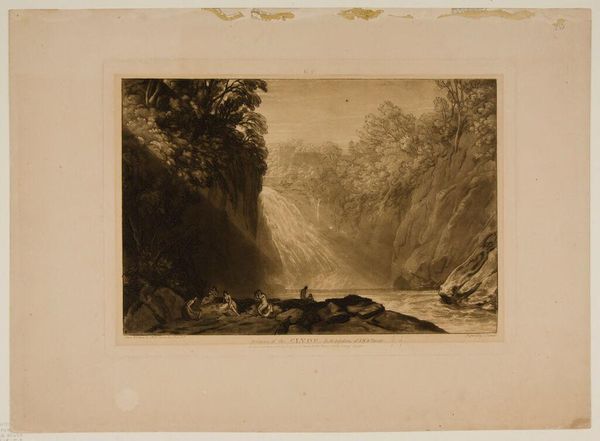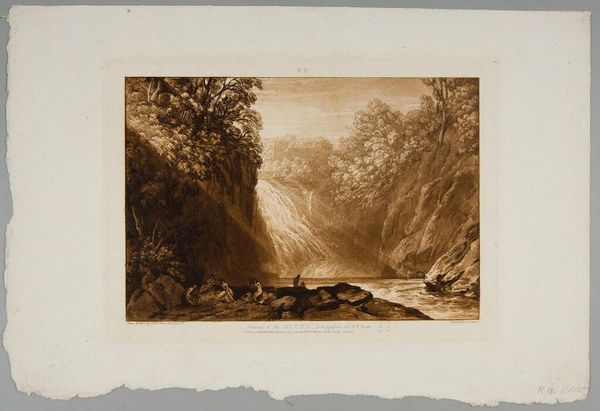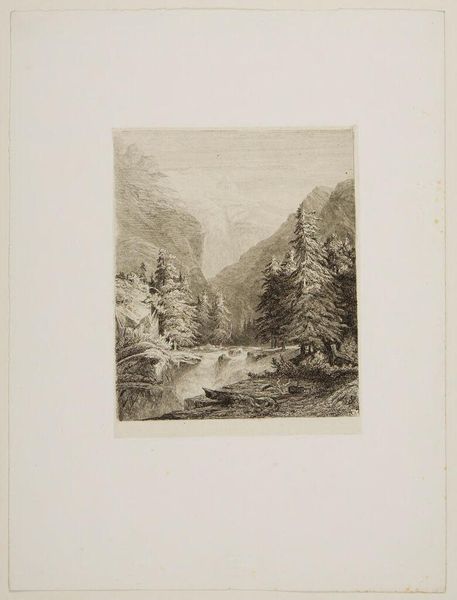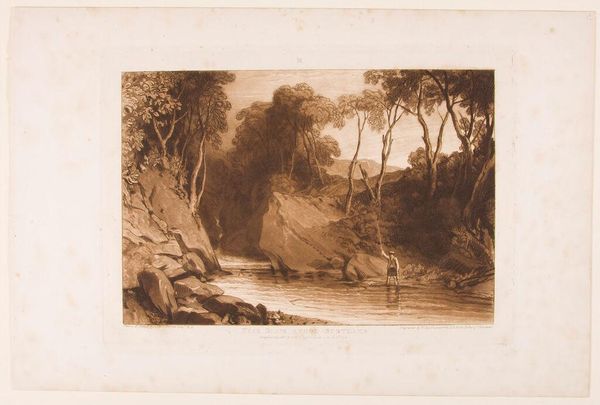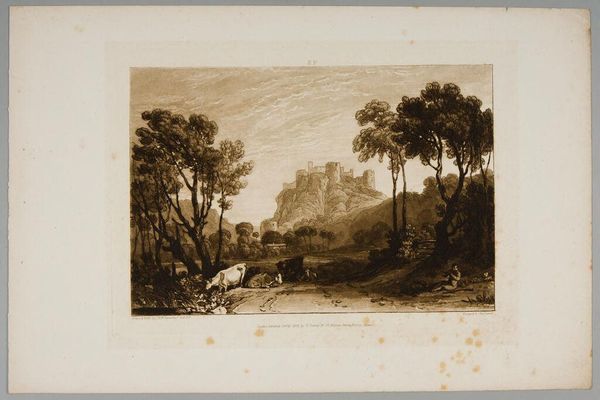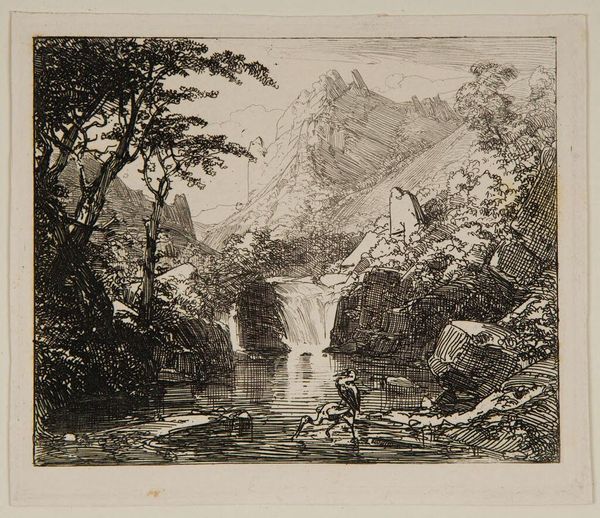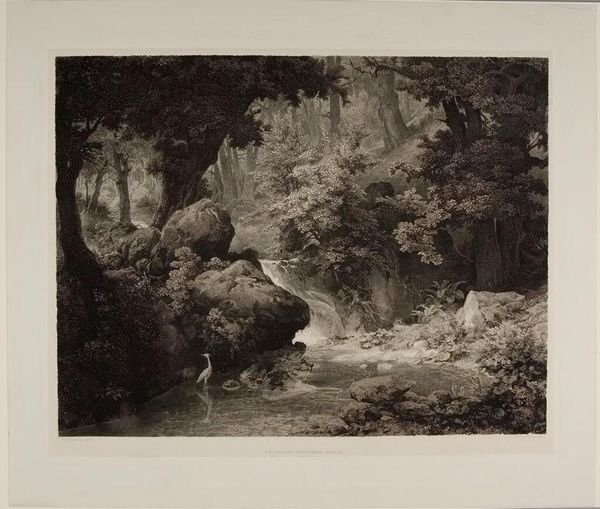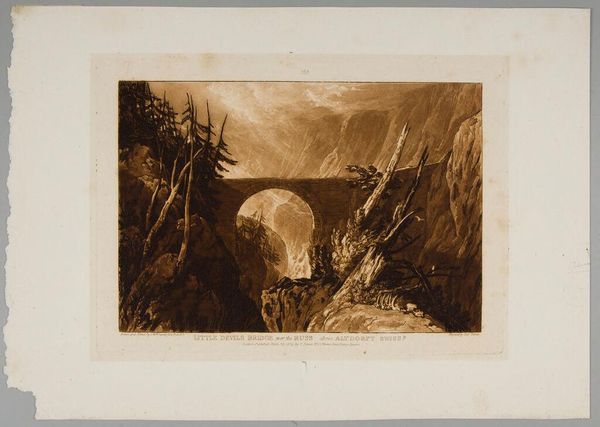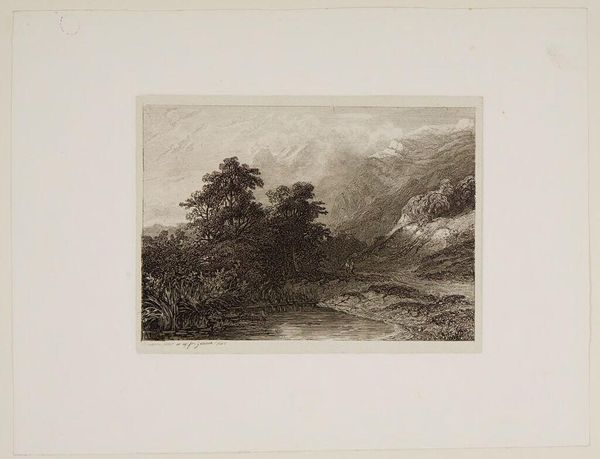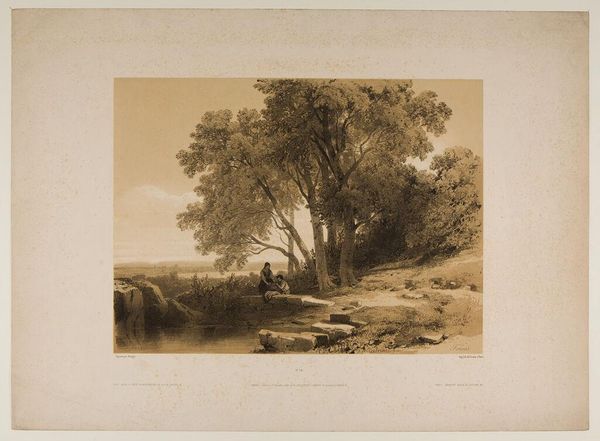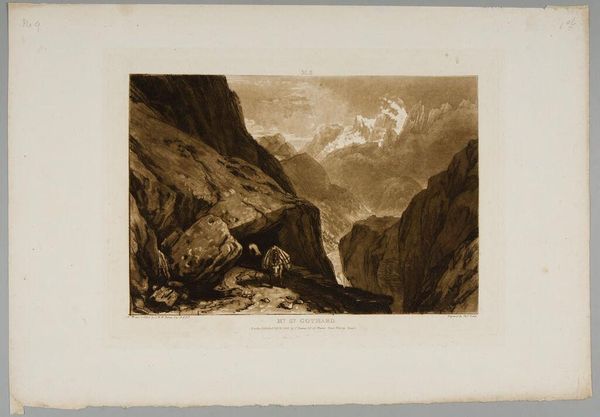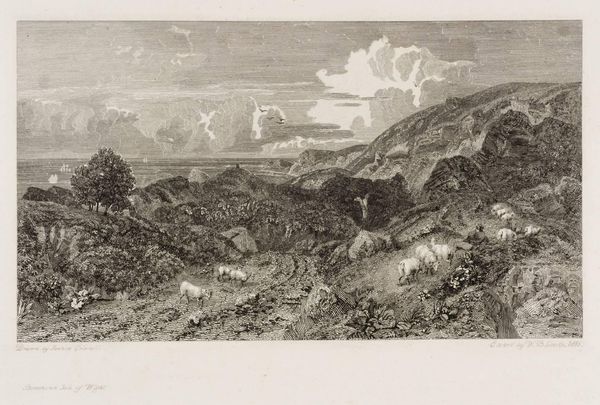
Copyright: CC0 1.0
Curator: Charles Turner's "The Clyde," held here at the Harvard Art Museums, presents a compelling vista rendered in sepia tones. Editor: It evokes a sense of both romanticism and solitude. The monochromatic palette seems to soften the harshness of the landscape, creating an inviting, almost dreamlike scene. Curator: Turner, who lived from 1774 to 1857, was working during a time of great fascination with landscape and the picturesque. We see in this image a carefully constructed composition, likely influenced by the aesthetic values of his era. Editor: The waterfall cascading into the river suggests the sublime, but the figures in the foreground domesticate the scene. Their presence implies a human connection to nature that resonates even now. Perhaps we're meant to feel a part of their contemplation. Curator: I find it intriguing how Turner uses the sepia ink to represent this Scottish landscape. The symbolic weight of a location is influenced by its representation; I can't help but consider how a painting in full color would carry a very different emotional register. Editor: Indeed. The print process itself, the very act of reproducing this image, speaks to the era's desire to control and disseminate visual knowledge. It's a powerful act of cultural interpretation, framing the perception of the Scottish Highlands. Curator: Thinking about how images shape our understanding through layers of symbols, it is fascinating to appreciate the cultural memory imprinted on this seemingly simple vista. Editor: Yes, a reminder that even the most serene images can carry within them the echoes of power, representation, and cultural ambition.
Comments
No comments
Be the first to comment and join the conversation on the ultimate creative platform.
